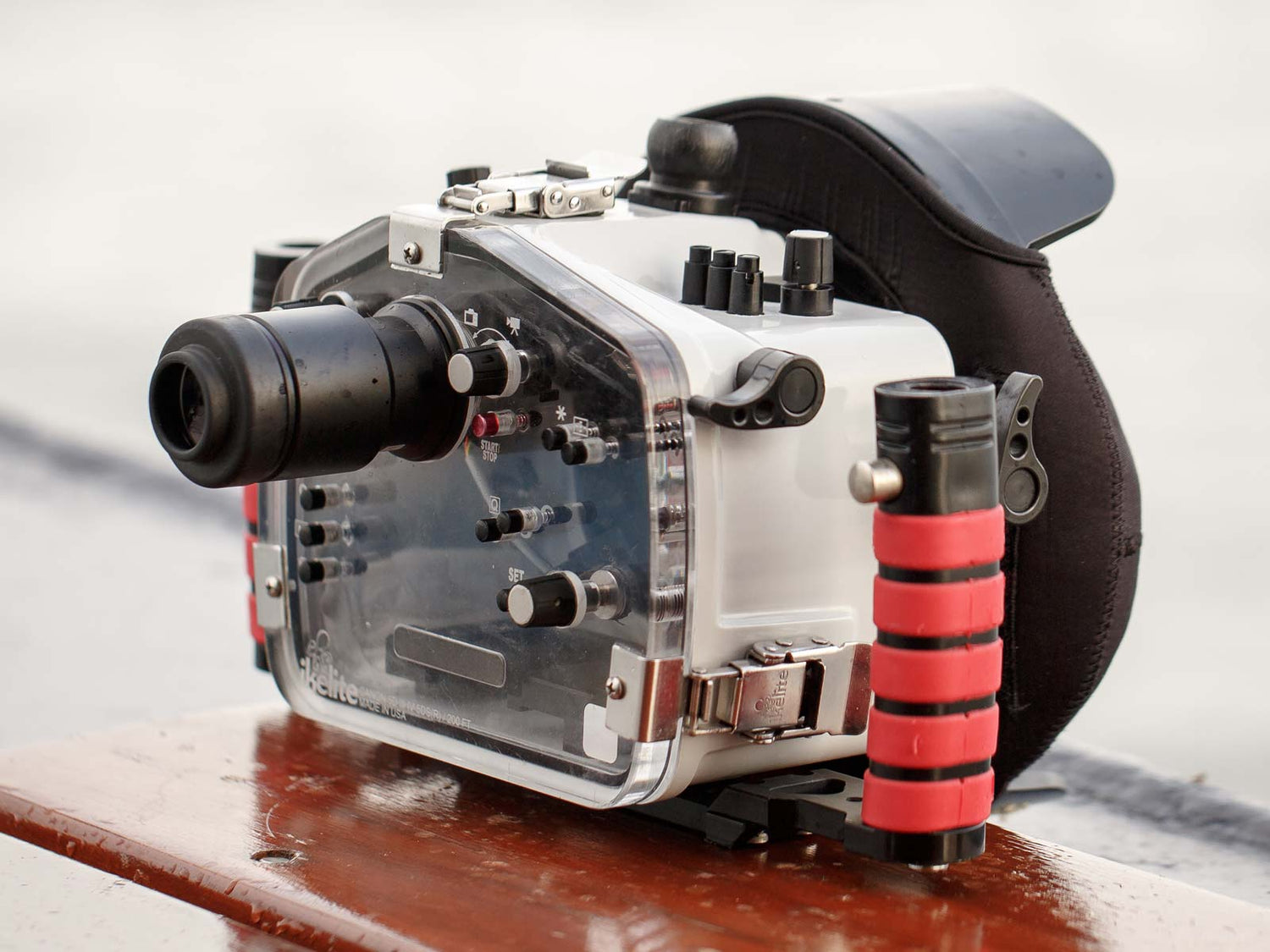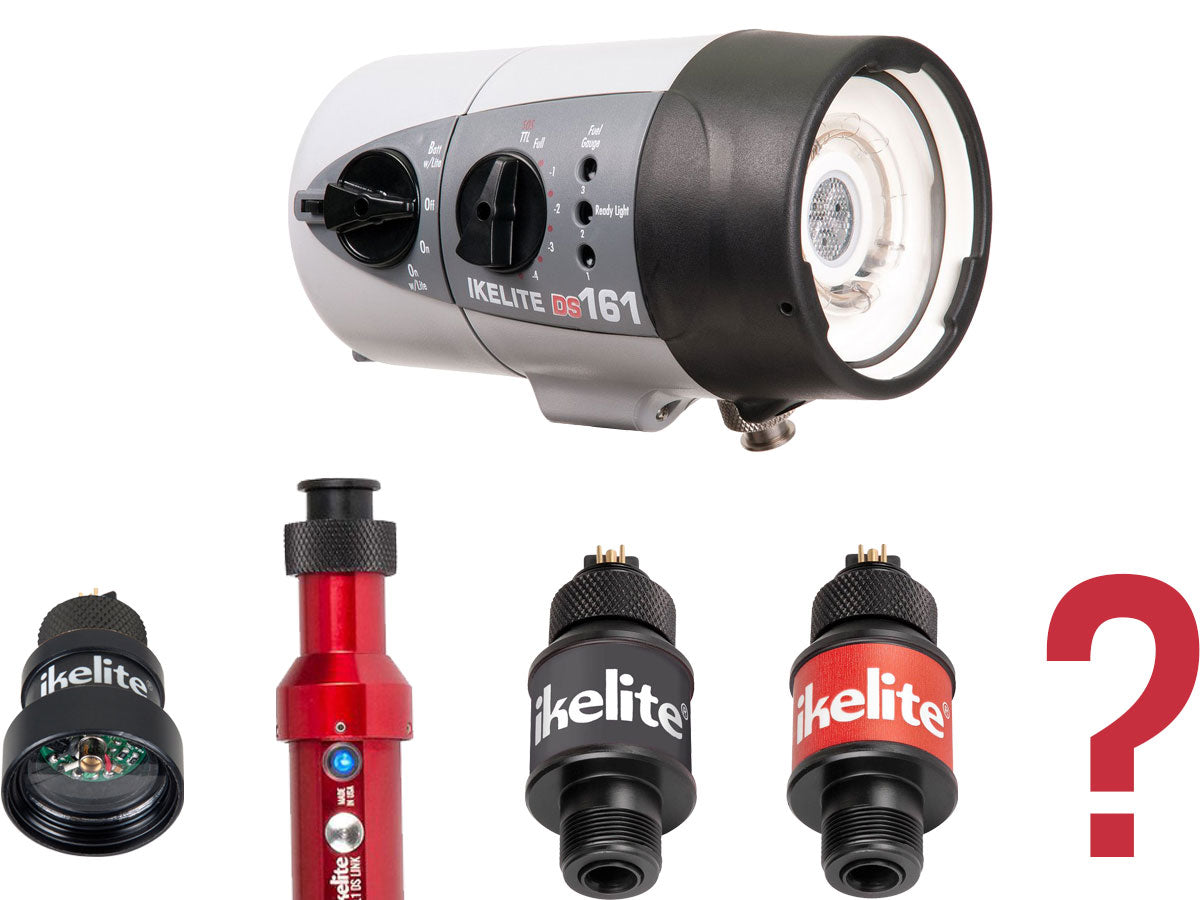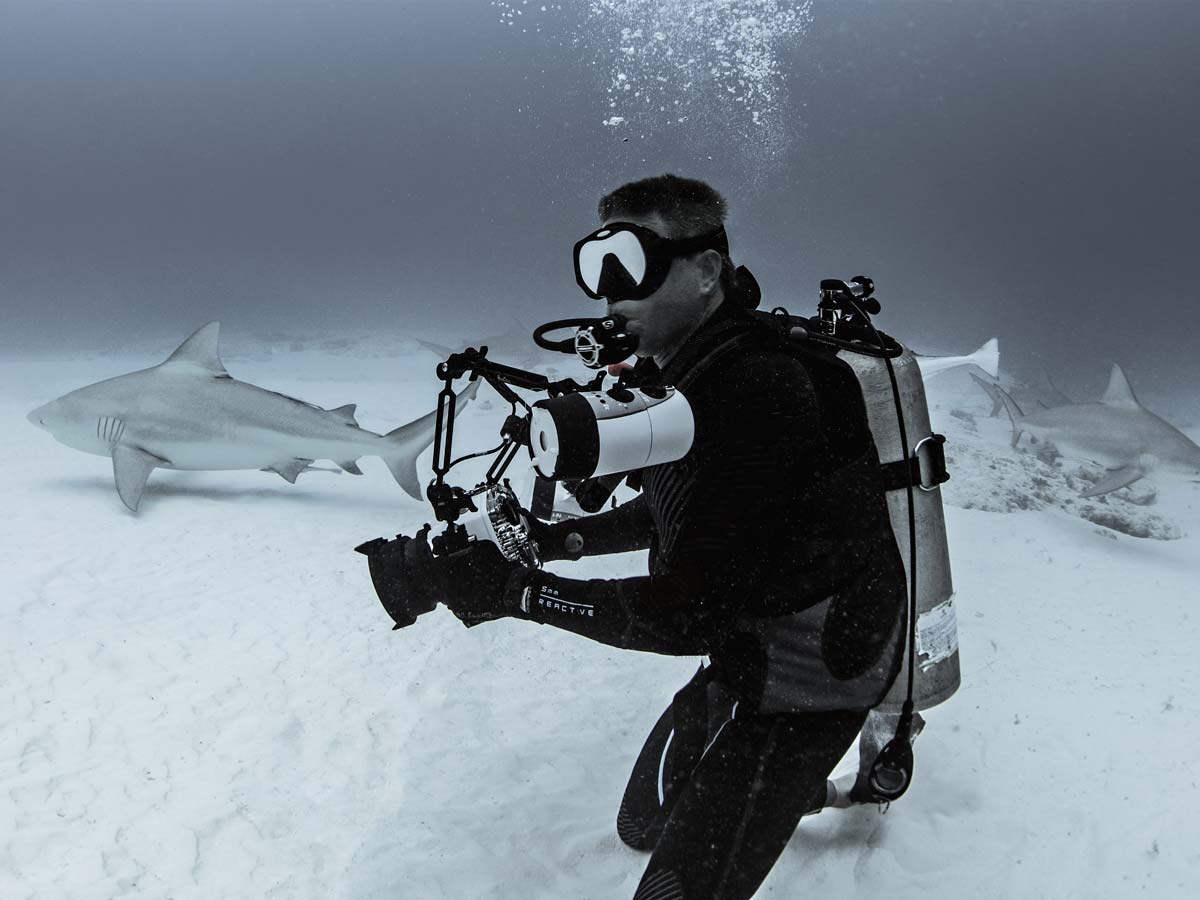If you're doing a lot of shooting or going to a particularly amazing dive location, you may be considering a magnified viewfinder. But you may be asking yourself which one to get, or perhaps why you even need one. Here's the lowdown on what a 45 degree or straight magnifying viewfinder can bring to your photography tool bag.
Live view and the camera's viewfinder
Cameras have two primary mechanisms for framing: an optical or electronic viewfinder, and live view via a rear LCD screen.
Live view is shown on a big, bright screen visible through the back of the housing. Why not just use live view? Two big answers which you may already know from shooting on land: speed and battery life. You want both of these things and live view is their enemy. Also live view can be difficult to use in extremely sunny conditions. So then what about the camera's viewfinder?
The simple need to waterproof the housing puts the camera's viewfinder at a not insignificant distance from your eye. Then there's an air-to-water interface which magnifies the image through the viewfinder. Some- not all- housings feature optics to correct for these two factors. These standard correcting viewfinders actually de-magnify the image so that you can see more than just the center of the frame by the time the image makes it through your dive mask.
The Straight Enhanced Magnifying Viewfinder (left) was released in fall 2019. It provides a brighter, more full image when used with newer full frame DSLR and mirrorless cameras.
The advantage of a magnifying viewfinder
45 degree and straight magnifying viewfinders are large and expensive because they have a complex series of lenses necessary to make the image not only visible, but larger and brighter. Magnifying viewfinders allow you to see more of the frame and to see it much more clearly.
Unfortunately it's rare to get a chance to see the exact same image side by side with and without viewfinder in person- it requires two complete housing, camera, and lens set-ups. We can say from experience that the brightness of a quality magnifying viewfinder is stunning compared to a standard viewfinder or none at all.
45 degree viewfinders
The advantage of the 45 degree is simply that it allows you to get upward camera angles more naturally. Shooting at a slightly upward angle is a benefit as much to macro as it is to wide angle work. It brings more shadow play and perspective into your photos making the environment look both more natural and more vibrant. Without the upward angle, most of your photos will look pretty flat.
A 45 degree viewfinder can also be a lot more ergonomic depending on how you're oriented in the water. When you're swimming or hovering near horizontal it's comfortable to be able to bend your neck only slightly backward to line up a shot, rather than really crane your neck or re-orient your body vertically.
Some people can find 45 degree viewfinders to be disorienting at first. Some of us may even have a problem with hitting ourselves in the face every time we go to take a photo at first. But it's worth modifying your muscle memory and once you get used to it you may find it impossible to go back.

The original Straight Magnifying Viewfinder shown has been upgraded with a newer model as of Fall 2019.
Straight viewfinders
The concept on the straight viewfinders is that if you are following something with a long lens far away, it is quicker to move from eye sight to the viewfinder... it's more intuitive to follow something at a distance, sighting like a gun over it. So some argue that a straight viewfinder is better for fast-action wide angle like a sailfish cutting through a bait ball or a great white shark dive.
There's what situation where the straight viewfinder is undoubtably king: the over-under, or "split" shot, where your housing is half-in, half-out of the water. The simple physics of this make it virtually impossible to sight accurately through a 45 degree viewfinder.
Ambassador Steve Miller says, "I have a couple thousand over-under images all shot with the 45 degree. I've tried everything from pulling the rubber boot that pools water off of it, and even tried swiveling it straight down so I'm looking up into it. Basically it always sucks. Shooting over the top or using live view or just guessing is better. I shoot tons of frames where I am surprised by what comes out, because I can't see it happening."
If you're floating or standing in the water then you'll want a straight view at your over-under scene. The larger, brighter image in the straight viewfinder will make it significantly easier to sight the water line and keep it where you want it in the frame.

A 45º viewfinder is great in most scenarios underwater but it will not work for split shots. A straight viewfinder is essential if you'll be doing a lot of work at the surface of the water.
Macro close-up work
Here's an analogy: telescopes. They always have a spotting scope mounted above the barrel. This is because it's easier to hone in on the star or whatever you are shooting, working like a rifle sight over the top. These long lenses see such narrow sliver of the scene, that finding your subject can be hard.
Once it's found, astronomers switch to a 45 or 90 degree viewfinder for the real work... it's more comfortable.
When you are working with a close subject underwater, finding it is (usually) the easy part. Composing the shot requires being able to see every inch of your frame.
So imagine you're lining up with a straight viewfinder and doing all of the right things. You come in close, and position yourself with your system pointing at an upward angle for a more natural perspective. Where does your chest and chin end up? In the coral! Which is exactly the last place they should be. Hence you could argue that shooting with a 45 degree viewfinder is more reef-aware. Over-hanging walls could certainly be an exception to this however.

Magnifying Viewfinders for Image Review
If your camera has an electronic viewfinder (EVF), then either of the magnifying viewers have a dual function. Previewing what you have just captured through the viewfinder is significantly better than looking at the screen.
It seems counterintuitive because the image in the ~1" EVF is the same as the one on the big, bright 3" rear LCD screen. So which one would you want to look at? The big one of course.
But it doesn't quite work that way. Your natural inclination is to tilt the housing forward to review the image on the rear LCD. When you do that, sunlight can obliterate the image. An LCD shade doesn't help because the viewing area is actually angled up towards the light. Plus you potentially have close vision issues to deal with.
When you look through the viewfinder you are looking through camera optics that were already calibrated to your eye. All ambient light is obstructed so it's like viewing in a dark room. It is much more immersive and easier to inspect the image corner to corner. You will often catch things that are missed with a standard back viewer, like having the strobes in too close and seeing their beam, or even blown out highlights.
Do you know that feeling when you scroll through your photos on the rear LCD and are pumped about that one shot... only to see it on your laptop later and end up a little disappointed? Image review in the EVF is the best insurance against that.
Inspecting your image on the camera back works very well in caves, on night dives, and anytime it's dark. The EVF method works better, even in very bright conditions like over-unders, snorkeling, or any sun drenched setting... that is, good diving!
Conclusion
A magnifying viewfinder can help you to take your photography to the next level by allowing you to compose your image more quickly and accurately. Like a quality lens, good viewfinder glass is an investment in your work. Magnifying viewfinders are designed to be easily added and removed from a housing so that you can continue to use them from one system to the next whenever you upgrade cameras.
Additional Reading
How to Shoot Split Shots (Half-In, Half-Out of the Water)














